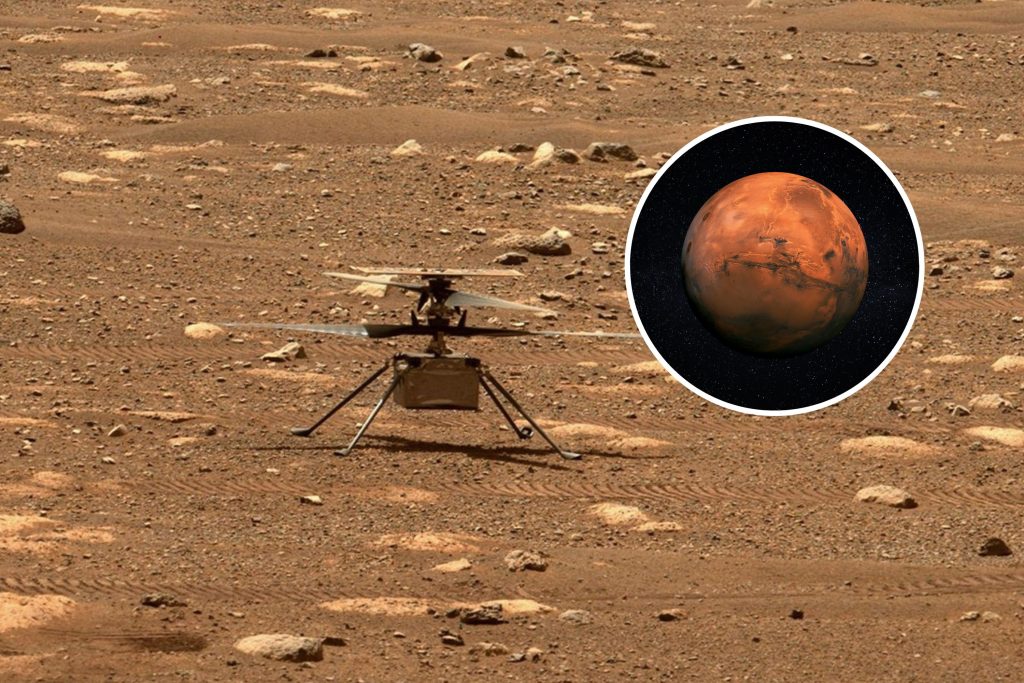The Demise of Ingenuity: Unraveling the Mystery of the Mars Helicopter Crash
Ingenuity, the pioneering rotorcraft that etched its name in history as the first aircraft to achieve powered flight on another planet, met an untimely end on January 18, 2024, during its 72nd flight on Mars. Months of meticulous investigation by engineers at NASA’s Jet Propulsion Laboratory and AeroVironment have finally pinpointed the cause of the crash: a critical failure in Ingenuity’s navigation sensors. This unfortunate event concludes the remarkable three-year journey of the small helicopter, which vastly exceeded its initial 30-day mission and five-flight objective.
Originally designed as a technology demonstration, Ingenuity’s mission was to prove the feasibility of powered flight in the thin Martian atmosphere. Launched with the Perseverance rover in July 2020, the helicopter landed in Jezero Crater in February 2021 and quickly surpassed all expectations. Ingenuity completed 72 flights, covering a distance over 30 times greater than initially planned. Its success paved the way for future aerial exploration on Mars, demonstrating the immense potential of rotorcraft for scientific discovery and reconnaissance.
The final flight of Ingenuity began routinely, with the helicopter ascending to an altitude of 40 feet to capture images of the Martian surface. However, during its descent, a critical failure occurred within its navigation system. The system, which relies on a down-facing camera to track visual features on the ground, was unable to acquire sufficient detail from the smooth, sandy terrain. This lack of discernible features led to an inaccurate calculation of the helicopter’s position, resulting in a high-speed horizontal landing that ultimately snapped all four of its rotors.
The challenging nature of conducting an accident investigation millions of miles away, without the benefit of black boxes or eyewitnesses, underscores the complexity of the task faced by the engineers. Limited data transmitted back to Earth, coupled with satellite imagery of the crash site, provided the crucial pieces of the puzzle. Analysis revealed that Ingenuity’s navigation system, accustomed to the textured rocky surfaces of its earlier flights, encountered difficulty navigating over the smoother, ripple-covered sand dunes that characterized the area of its final flight.
The innovative use of commercial off-the-shelf cellphone processors in Ingenuity’s design played a significant role in its longevity and affordability. This unconventional approach challenged the traditional reliance on larger, heavier, and radiation-hardened components for deep space missions. The helicopter’s nearly four years of continuous operation demonstrated the viability of this cost-effective strategy, opening up new possibilities for future spacecraft design.
Even in its final resting place on Mars, Ingenuity continues to contribute to scientific endeavors. The helicopter relays weather data back to Earth via the Perseverance rover and transmits valuable avionics test data, which will inform the development of more advanced aircraft for future Mars missions. NASA is currently designing a larger "Mars Chopper," a significantly more capable rotorcraft inspired by Ingenuity’s success. This next-generation aircraft is envisioned to be 20 times heavier than Ingenuity and capable of traversing distances up to two miles per day.
Ingenuity’s legacy extends far beyond its groundbreaking flights. The data and experience gained from its mission are instrumental in shaping the future of aerial exploration on Mars. The development of the "Mars Chopper" exemplifies the enduring impact of Ingenuity, showcasing how its triumphs and challenges are paving the way for more ambitious and sophisticated aerial platforms to unlock the mysteries of the Red Planet. The small helicopter’s journey has ended, but its contribution to the exploration of Mars has just begun.










